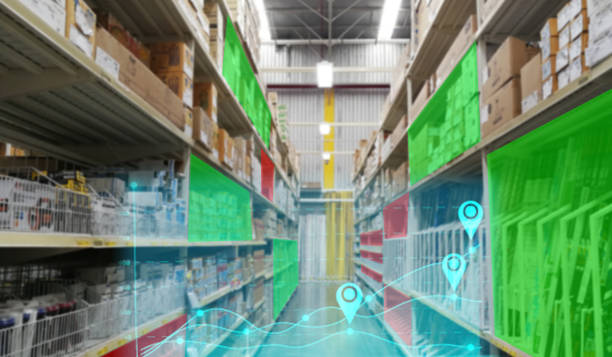In an era where milliseconds matter, eCommerce platforms must load faster, scale effortlessly, and deliver personalized user experiences without skipping a beat. The solution? Headless eCommerce paired with modern, high-performance hosting.
Together, they form a technological dream team—an architecture and infrastructure duo designed to optimize speed, boost conversions, and future-proof your online store.
Let’s break down why this combination isn’t just popular—it’s essential.
What Is Headless eCommerce and Why Is It Transforming Online Retail?
Headless eCommerce is a modern approach where the frontend (what customers see) is decoupled from the backend (where data and operations live). This separation lets developers build dynamic user experiences using tools like React, Vue, or Angular while still leveraging powerful backends like Shopify, Magento, or BigCommerce.
Why businesses are shifting to headless:
-
Faster sites that load in under two seconds
-
Design freedom with custom frontends
-
Multi-channel integration (web, mobile apps, IoT)
-
Seamless scalability with microservices and APIs
Instead of being trapped in monolithic systems, brands gain flexibility—and speed.
Why Hosting Is Crucial for Headless Performance
In a traditional setup, hosting simply delivers your website files. But with headless, hosting becomes the performance engine.
Here’s why:
-
Your frontend often uses JavaScript-heavy frameworks.
-
These require server-side rendering (SSR) or static site generation (SSG).
-
APIs call data dynamically, meaning response times impact user experience.
If your hosting can’t handle this workload at the edge or with scale, your speed suffers—and so does your revenue.
How Headless Hosting Supercharges Site Speed
Let’s look at how modern hosting platforms elevate headless commerce:
🔹 1. Edge Delivery via CDN
Edge hosting delivers content from data centers closest to your visitors, cutting load times dramatically. Netlify and Vercel are industry leaders here, optimizing response speeds globally.
🔹 2. Server-Side Rendering (SSR)
SSR enables real-time, personalized pages to load fast—ideal for SEO and UX. Tools like Next.js or Nuxt.js work seamlessly with hosts like Vercel or AWS Amplify to deliver dynamic content without delays.
🔹 3. Serverless Functions
Serverless architecture allows you to run backend logic—such as checkout processing or user authentication—without spinning up entire servers. This keeps your platform agile and scalable.
🔹 4. Build & Deploy Automation
Headless hosting supports CI/CD pipelines that auto-deploy new changes directly from Git—ensuring faster iteration and near-zero downtime.
Top Hosting Features You Need for a Headless Setup
Choosing a host for your headless store? Prioritize the following:
-
✅ Edge CDN Integration
-
✅ Support for JAMstack / React-based Frameworks
-
✅ Serverless Function Capability
-
✅ Automatic Scaling
-
✅ Fast Build Times with Caching
-
✅ Global Distribution
-
✅ Custom Domain and HTTPS Setup
Reliable providers like Netlify, Vercel, Cloudflare Pages, and AWS Amplify are tailored to meet these demands.
How to Decide If You Need Headless Hosting
Ask yourself:
-
Do you want a fully customized frontend?
-
Are you experiencing slow page loads with your current setup?
-
Do you need to deliver content across multiple platforms (apps, kiosks, wearables)?
-
Is SEO performance critical to your growth?
If the answer is yes to any of these, headless hosting isn’t a luxury—it’s a necessity.
Headless eCommerce Hosting vs Traditional Hosting: A Quick Comparison
| Feature | Traditional Hosting | Headless Hosting |
|---|---|---|
| Architecture | Monolithic | Decoupled |
| Speed Optimization | Basic CDN (optional) | Edge CDN, SSR, caching |
| Scalability | Manual or limited | Auto-scaled serverless |
| Deployment | FTP / Manual | Git-integrated CI/CD |
| Custom Frontend Support | Limited | Full support for frameworks |
| SEO Optimization | Often weak for JS-heavy | Excellent via SSR |
As you can see, speed and scalability are built-in features of headless hosting, not afterthoughts.
FAQs: Headless eCommerce and Hosting
Q1: What is headless eCommerce in simple terms?
It’s when your website’s frontend (design) is separated from the backend (data and functionality), allowing more flexibility, better performance, and cross-platform delivery.
Q2: Why is hosting so important in a headless setup?
Because the frontend relies on dynamic rendering and API calls, your hosting needs to be lightning-fast and globally distributed to avoid lag.
Q3: Can I still use Shopify or Magento in a headless way?
Yes! Platforms like Shopify now offer APIs and frameworks like Hydrogen. You can use Shopify’s powerful backend with a custom-built React frontend.
Q4: Will this improve my SEO?
Yes. With the right setup using SSR or static generation, your site will load faster and be more crawlable—both key ranking factors.
Q5: Is headless hosting expensive?
Not necessarily. Many platforms offer free tiers or pay-as-you-go plans. What you gain in performance often outweighs the cost.





